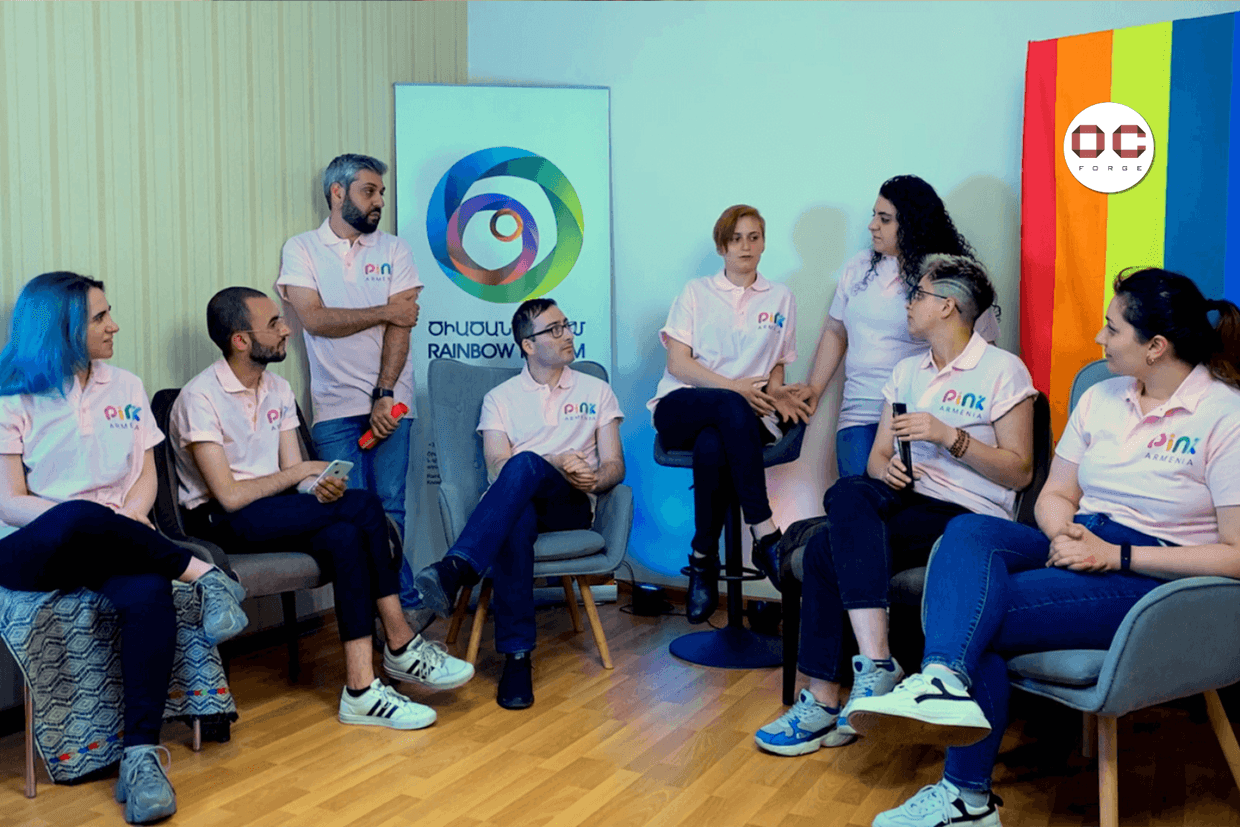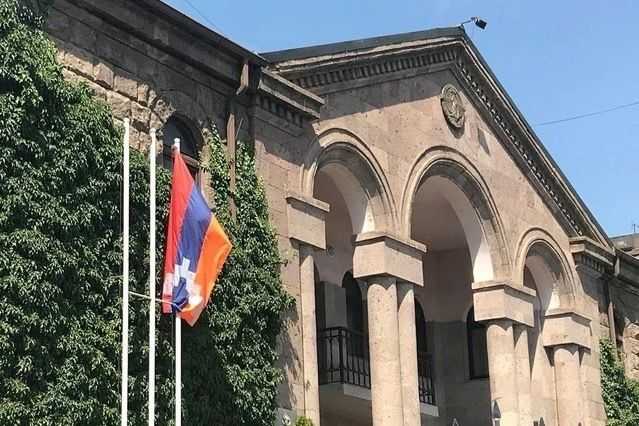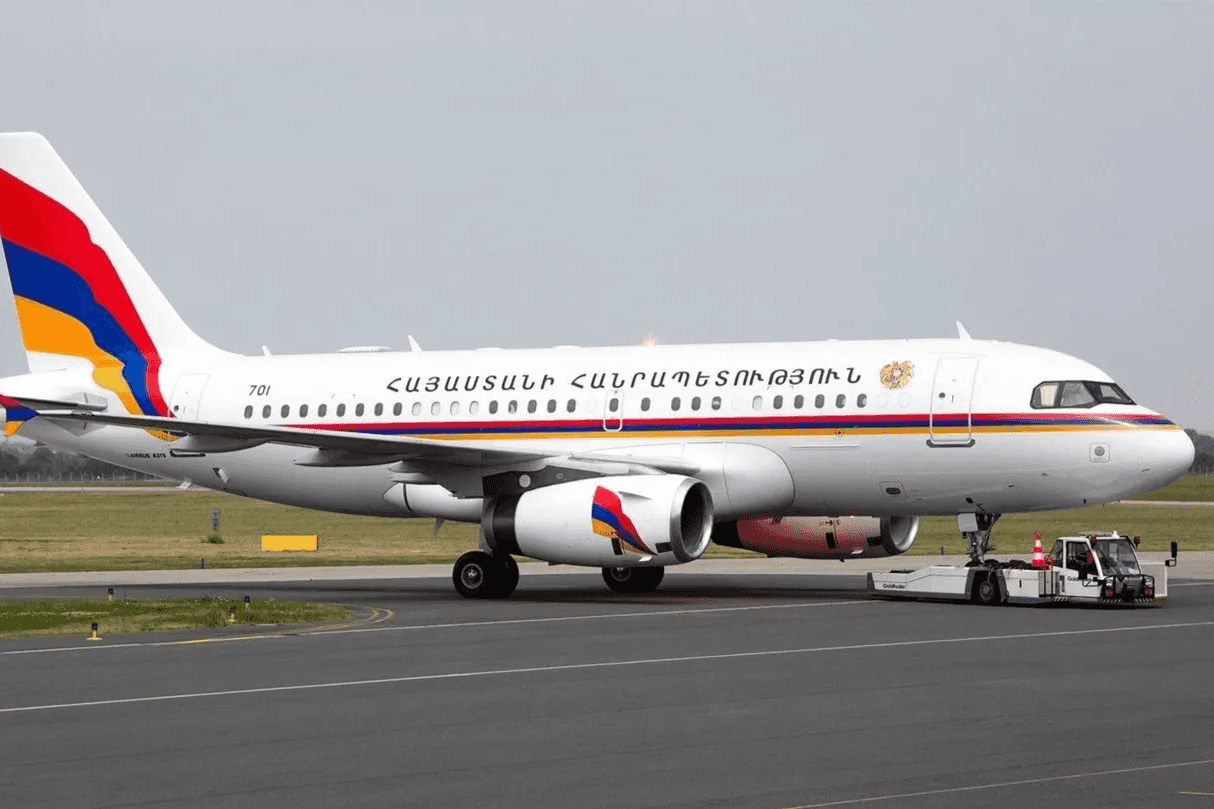
The Holy Struggle movement, formerly known as Tavush for the Motherland, has held its first rally in months — this time demanding airtime on Armenia’s public broadcaster to announce the resumption of their protests.
On Wednesday evening, Holy Struggle hosted a rally in Yerevan’s Republic Square, which, according to calculations by local civil society organisations, was attended by around 1,900 people.
Holy Struggle, formerly the Tavush for the Motherland movement, was founded in protest against the border delimitation with Azerbaijan, which began in Tavush, a province located on the border, in April. The movement gradually grew into a series of anti-government protests demanding Armenian Prime Minister Nikol Pashinyan’s resignation. The demonstrations were attended by thousands of people, an unprecedented number since the 2018 revolution.
Their new name, Holy Struggle (Srbazan Paykar) features a play on words, with ‘srbazan’ being the traditional way by which to address an archbishop, such as the movement’s leader. It also refers to the movement’s so-called ‘holy’ goal to save Armenia.
Wednesday’s rally was the first led by the movement since June. That month, over 100 people, including several police officers, were injured outside the parliament building in Yerevan after police deployed stun grenades to quash the protests. Following this, the movement seemed to gradually become less active.
In his official speech, Galstanyan announced that Holy Struggle would continue to protest until the government resigned. He also called Armenia’s Public TV a ‘hotbed of propaganda’ and a ‘den of evil’.
‘We will go there with the demand for a live broadcasting, so that the voice of truth can be heard from there’, Galstanyan said. He stated that this would be the first demand of the resumed protests, after which they would decide their next steps.
This move echoed one made by Pashinyan and his supporters in 2018. At that time, during anti-government protests, they forced their way into Armenia’s public radio station, and demanded a broadcast by which to make an address to the public.
As the protesters marched to the Armenian Public TV building to state their demands, the broadcaster announced that they were ready ‘to host Bagrat Galstanyan or any of the leaders of the movement live in an interview format’.
The broadcaster also noted that since the movement’s founding, they had repeatedly sent invitations to its leaders, but had mostly received rejections. They claimed that ‘those who did not refuse the interview were hosted on our air.’
After arriving at the station, in front of which were stationed a large number of police, negotiations took place between the head of the station, Hovhannes Movsisyan, and the movement’s leaders. While they deliberated, the TV station aired a show featuring host Petros Ghazaryan watching the ongoing negotiations and providing commentary throughout.
Eventually, in a compromise, the station agreed to interview Galstanyan that evening. In the first half of the broadcast, Galstanyan delivered a live address to the Armenian public, during which he criticised the government and called on the public to join Holy Struggle in a second rally, scheduled to be held on 6 October in Yerevan’s Republic Square.
During the interview portion of the broadcast, Galstanyan refused to answer any questions put to him by the show’s host. He accused the TV of bias, and claimed that he only stayed for the remainder of the show out of respect to the compromise they had negotiated.
Previously, in September, Galstanyan met with opposition factions in the parliament, as well as with former Armenian presidents Robert Kocharyan and Serzh Sargsyan.









